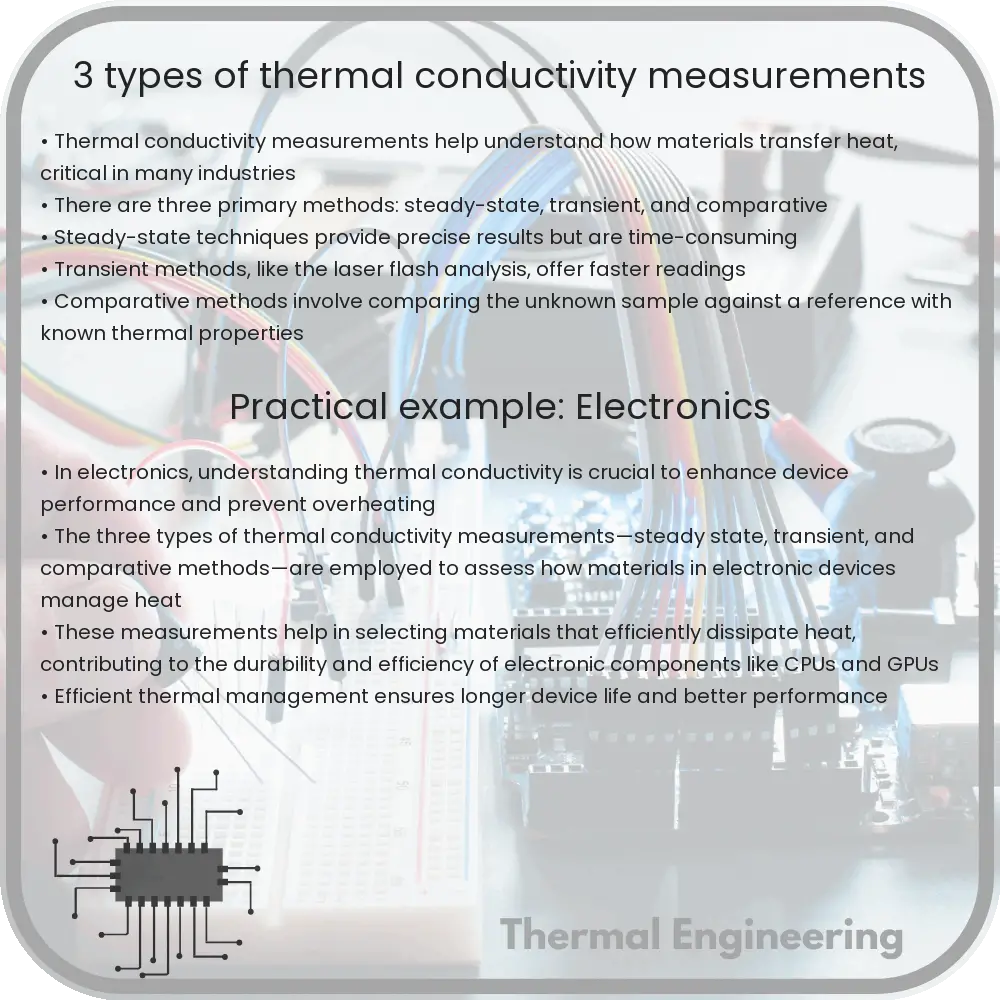Explore essential methods for measuring thermal conductivity, a key property in material science and engineering.

Understanding Thermal Conductivity Measurements
Thermal conductivity is a fundamental property that measures a material’s ability to conduct heat. It is crucial in various engineering and scientific applications, from designing heat exchangers to manufacturing electronic devices. Measuring thermal conductivity accurately is vital for evaluating and selecting materials for specific heat management applications. There are several methods commonly used to measure the thermal conductivity of materials. Each technique has its unique setup, advantages, and limitations. Below, we explore three primary types of thermal conductivity measurements.
1. Steady-State Techniques
Steady-state methods are characterized by the requirement that the temperature does not change with time during measurement, implying that a steady state of heat flow has been established throughout the test sample. Among these techniques, two popular methods are the guarded hot plate method and the heat flow meter method.
- Guarded Hot Plate Method: This method involves placing the material sample between two plates, with the lower plate heated to a higher temperature and the upper plate maintained at a lower temperature. Insulation surrounds the central heating plate to ensure minimal heat loss, providing a stable temperature gradient across the sample. The steady heat flow achieved allows for the calculation of thermal conductivity using the heat flow, the area through which the heat is transferred, and the temperature difference.
- Heat Flow Meter Method: This approach uses a heat flow meter, which consists of a plate with known thermal conductivity values, sandwiched between the sample and a temperature-controlled plate. The heat flow meter is calibrated so that the heat passing through it can be calculated from the voltage produced by the thermopiles in the meter. This method is typically faster and suitable for insulating materials.
2. Transient Techniques
In contrast to steady-state techniques, transient methods assess how a material’s temperature changes over time in response to changes in heat flow. These methods are generally faster and can handle a broader range of materials, including fluids and high thermal conductivity solids.
- Transient Hot Wire (THW) Method: This technique involves a thin wire, electrified and embedded within the sample. The wire acts as both the heater and the thermometer. When the wire is heated by an electrical current, the temperature rise is measured over time. The thermal conductivity is then deduced from the rate of temperature increase, the properties of the wire, and the dimensions of the sample. THW is notable for its simplicity and quick measurement times.
- Laser Flash Analysis (LFA): The LFA method includes subjecting one side of a thin sample to a short laser pulse and recording the temperature response on the opposite side. From the time taken for the pulse to cause a temperature rise on the back face, thermal diffusivity is computed. Thermal conductivity can then be calculated using the relationship between thermal diffusivity, specific heat capacity, and density.
3. Comparative Techniques
Comparative methods measure the thermal conductivity of a sample by comparing it to a reference material with known thermal conductivity. The comparative cut-bar method is one notable approach in this category.
- Comparative Cut-Bar Method: This method involves measuring the steady-state temperatures along bars of the sample material and a reference material subjected to the same heat flow. The thermal conductivity of the sample is calculated relative to that of the reference material based on the measured temperature gradients and the known conductivity of the reference material.
The choice of which thermal conductivity measurement method to use often depends on the material type, the desired precision, and the specific application requirements. Understanding the differences and applications of these methods helps in selecting the most appropriate technique for any given situation.